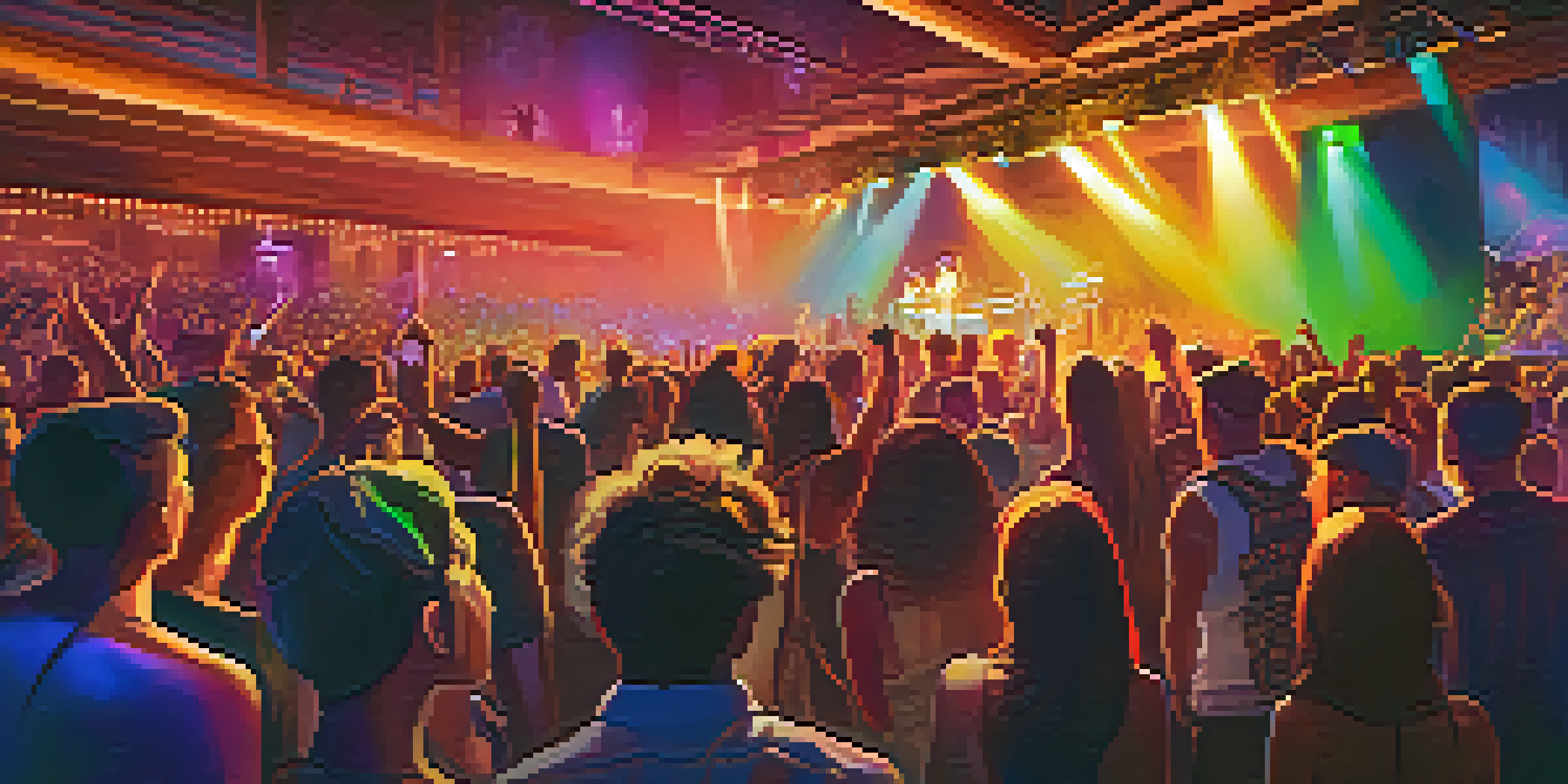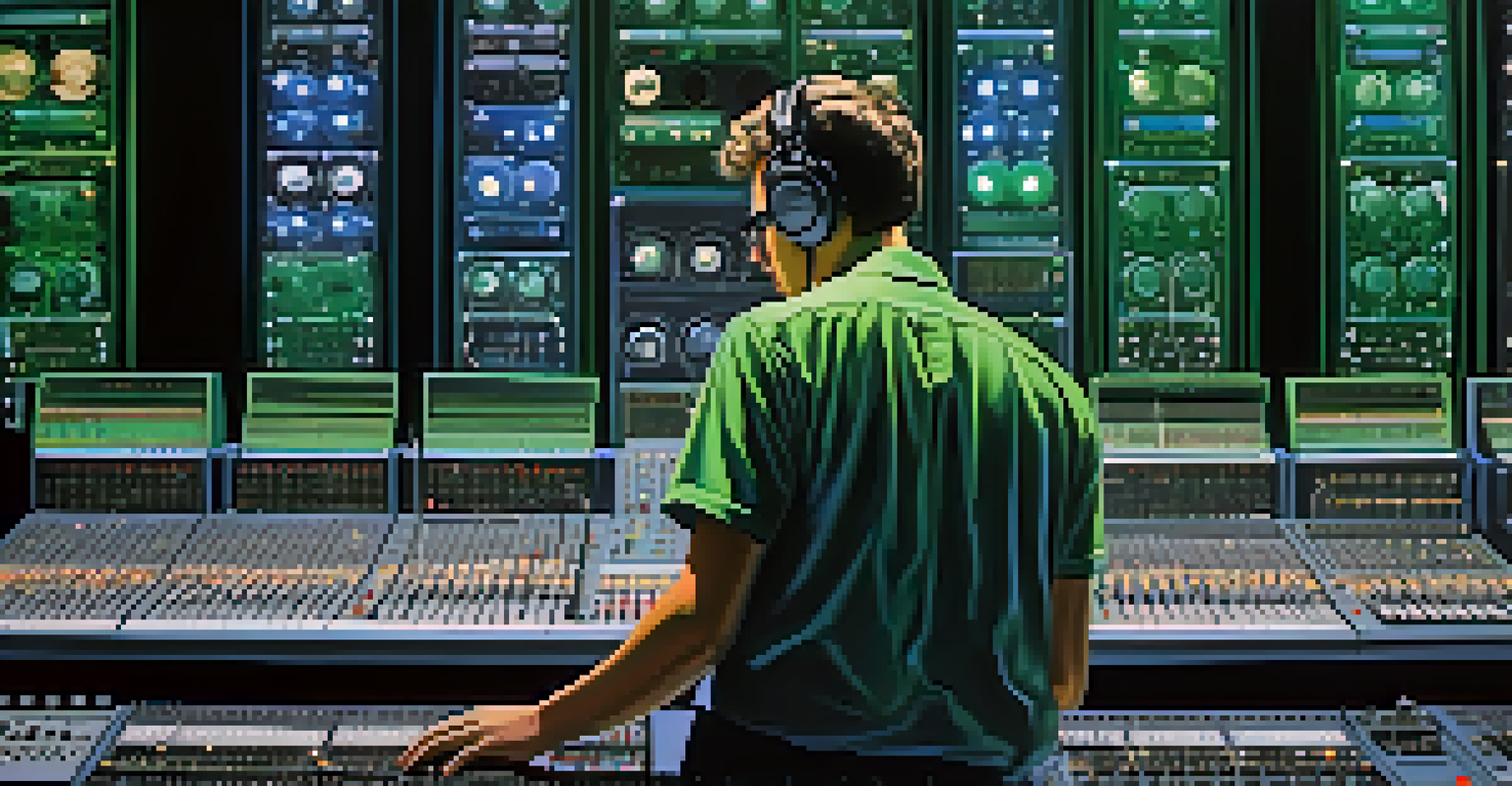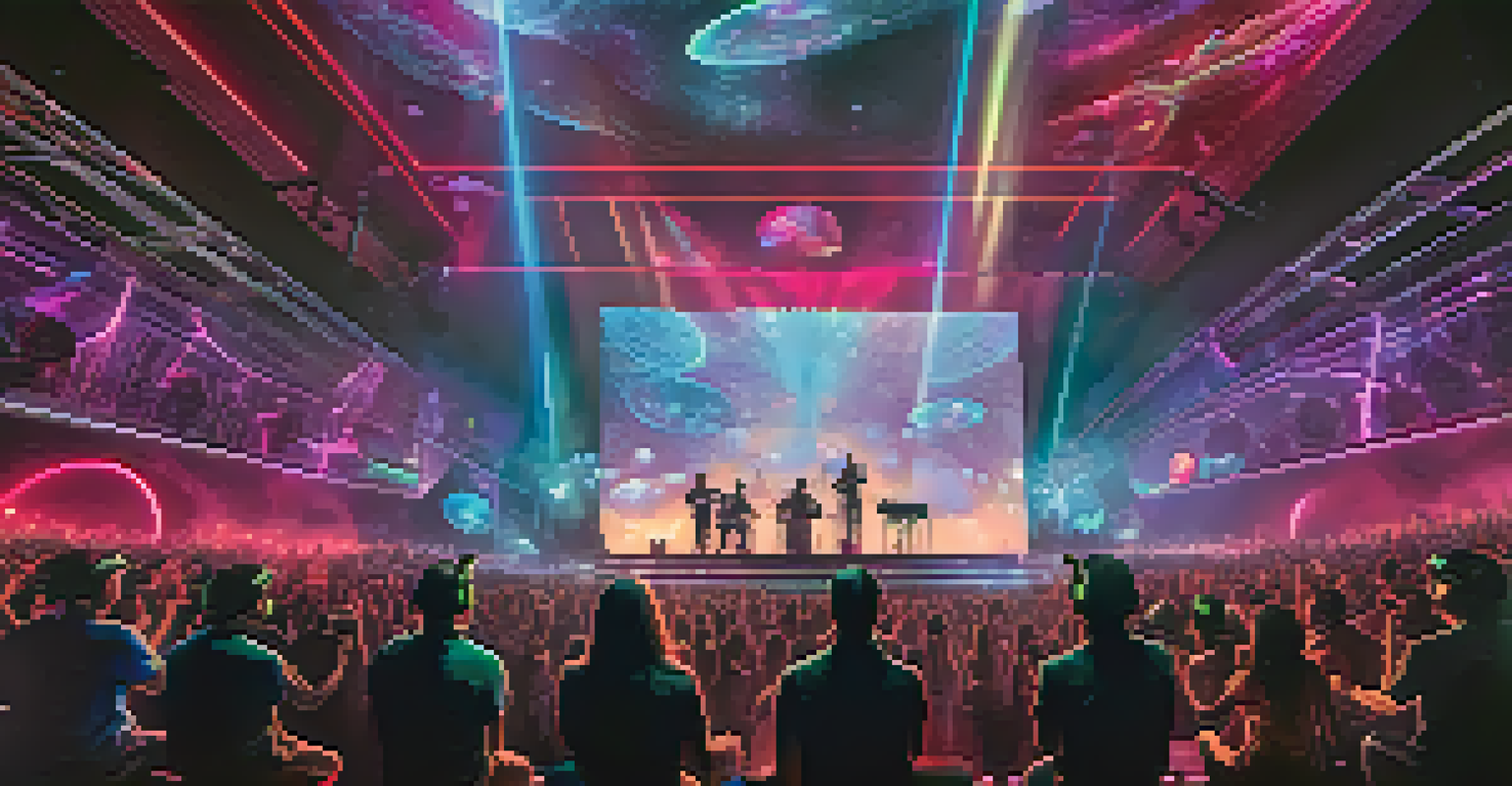The Evolution of Concert Technology: Enhancing Live Music

The Beginnings of Concert Technology: A Historical Overview
Concert technology has come a long way since the days of simple acoustic performances. In the early 20th century, artists relied on basic amplification systems that barely carried their voices beyond the first few rows. As the demand for bigger and better sound grew, innovations like microphones and speakers started to shape live music experiences.
Music can change the world because it can change people.
The introduction of electric instruments in the 1930s marked a significant turning point. Suddenly, guitarists and keyboardists could join orchestras without being drowned out, creating a richer, more dynamic sound. This shift laid the groundwork for what would eventually become the modern concert experience we know today.
As audiences grew and venues expanded, concert technology had to evolve rapidly. Innovations like multichannel sound systems and sophisticated mixing boards allowed sound engineers to deliver a balanced and immersive experience, setting the stage for the spectacular shows we enjoy now.
The Impact of Sound Engineering on Live Performances
Sound engineering is the backbone of any successful live concert. The careful manipulation of audio levels ensures that every note rings clear, allowing artists to connect with their audience. With advanced mixing consoles, sound engineers can create spatial audio environments that make audiences feel enveloped in the music.

Moreover, the use of in-ear monitors has revolutionized how performers hear themselves on stage. These devices provide a personalized audio experience, helping artists deliver their best performances without the distraction of ambient noise. Imagine trying to sing your heart out while battling the roar of thousands of fans – in-ear monitors make this challenge manageable.
Concert Technology Evolution
Concert technology has advanced from basic acoustic systems to sophisticated sound engineering, lighting design, and video technology, enhancing live music experiences.
As technology continues to advance, sound engineering will keep pushing boundaries. Innovations like 3D audio and spatial sound technology promise to create even more immersive concert experiences, allowing fans to feel as though they are part of the performance.
Lighting Design: Creating Atmosphere and Energy
Lighting design plays a crucial role in the overall concert experience, transforming venues into vibrant spectacles. From the soft glow of stage lights to dazzling laser displays, lighting enhances the emotional impact of a performance. It's not just about illumination; it's about creating a visual narrative that complements the music.
Technology is best when it brings people together.
Modern lighting technology utilizes LED fixtures and programmable systems that can change colors, patterns, and intensities in real-time. This flexibility allows designers to synchronize lighting effects with the music, amplifying climactic moments and engaging the audience on a deeper level. Who hasn't felt their heart race as the lights flash in sync with a powerful guitar solo?
As concerts become more immersive, the integration of lighting and visual effects will continue to evolve. The future may hold even more seamless blending of lighting with augmented and virtual reality, creating experiences that transport attendees to entirely new worlds.
Video Technology: Enhancing Visual Storytelling
In today's concerts, video technology has become an integral part of the live experience. Large LED screens display visuals that enhance the performance, from band footage to stunning animations that match the music's mood. These visuals not only entertain but also help tell a story, drawing the audience into the artist's world.
The use of live video feeds can also bring fans closer to the action, especially in large venues. By capturing close-ups of the performers, video technology ensures that even those seated far away feel connected to the show. It's almost like having a backstage pass without leaving your seat!
Interactive Audience Engagement
The rise of smartphones and apps has transformed concerts into interactive experiences, allowing fans to participate in real-time and feel more connected to the performance.
As technology continues to advance, artists are likely to explore even more innovative ways to incorporate video into their performances. Imagine a concert where the visuals dynamically change based on the audience's reactions – the possibilities are endless!
The Rise of Interactive Concert Experiences
With the advent of smartphones and apps, audience engagement has reached new heights. Many concerts now feature interactive elements, allowing fans to participate in real-time through polls, song requests, or even light shows. This level of involvement transforms passive spectators into active participants, creating a collective energy that enhances the overall experience.
For example, some artists have used apps to let fans control the colors of stage lights during specific songs, resulting in a unique light show that reflects the audience's mood. This interaction not only empowers fans but also fosters a sense of community among concertgoers, as they collectively shape the performance.
As technology continues to evolve, we can expect even more elaborate interactive experiences. Imagine attending a concert where your physical movements influence the music or visuals – the future of live music is bound to be an exciting journey of innovation.
The Role of Social Media in Concert Promotion
In the digital age, social media has transformed how concerts are marketed and experienced. Artists and promoters use platforms like Instagram, Twitter, and TikTok to connect with fans, share behind-the-scenes content, and build anticipation for upcoming shows. This direct line of communication allows fans to feel more connected to their favorite artists.
Additionally, social media can amplify concert experiences in real-time. Fans often share their experiences through live tweets, posts, and stories, creating a virtual concert atmosphere for those who couldn't attend. This shared excitement can generate buzz and drive ticket sales for future shows.
Future Innovations in Concerts
Emerging technologies like AI and virtual reality are set to further revolutionize concert experiences, making them more personalized and accessible to audiences worldwide.
As concerts become increasingly intertwined with social media, artists who embrace these platforms will likely foster stronger connections with their audience. The symbiotic relationship between live music and social media is set to grow, enhancing both the promotion and experience of concerts.
The Future of Concert Technology: What Lies Ahead?
As we look to the future, it's clear that concert technology will continue to evolve at a rapid pace. Emerging technologies like artificial intelligence and machine learning may play a significant role in personalizing live music experiences. For instance, AI could help artists analyze audience reactions and adapt performances in real-time.
Moreover, advancements in virtual and augmented reality are poised to redefine how we experience concerts. Imagine donning VR headsets to attend a live show from the comfort of your home, feeling as though you're truly in the front row. These innovations promise to make live music accessible to even more fans around the world.

While the core of live music will always be about the artists and their connection with the audience, technology will continue to enhance these experiences. The possibilities are endless, and the future of concert technology is sure to be as thrilling as the music itself.